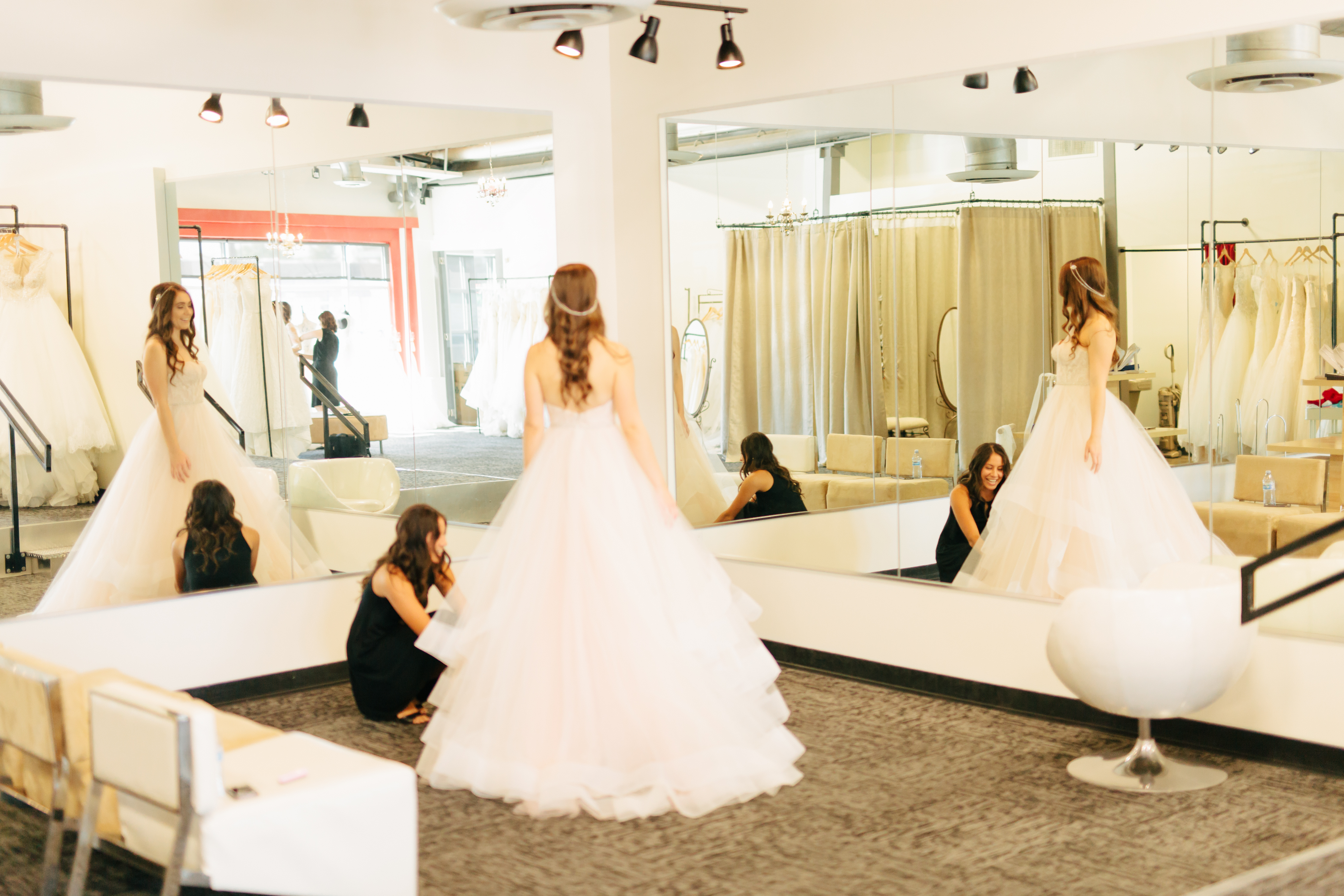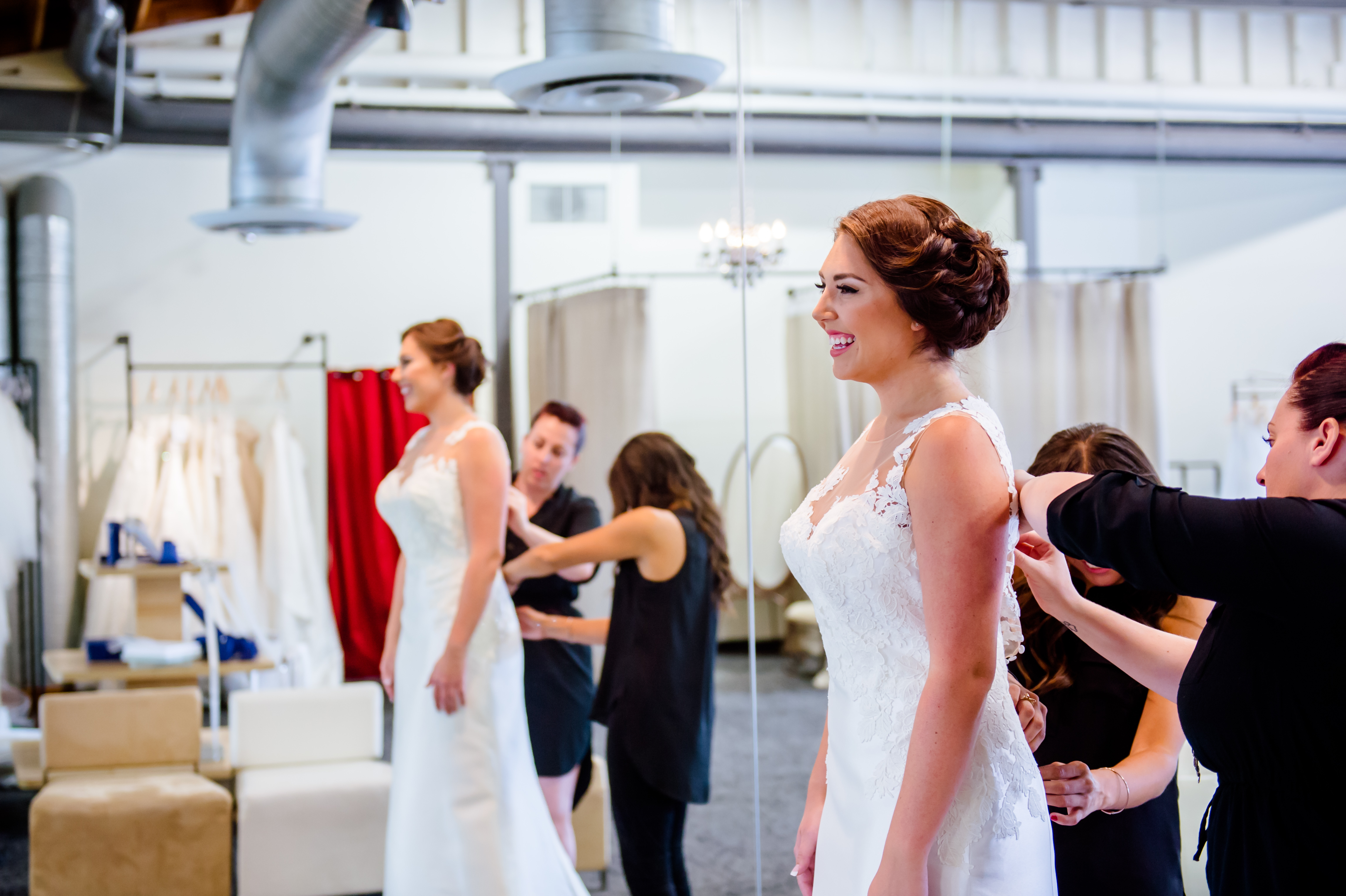Alterations for the Perfect Fit
For most brides, once you find the gown you can’t live without, you get your measurements taken and your stylist will help you select a size. This size is usually very close to your current measurements or the measurement you may be working towards. Unfortunately, even though the measurements are close, they aren’t perfect. To get the perfect fit you need alterations!
Whether you’re still shopping or already have your gown, here are some tips and things to know!

IN-HOUSE ALTERATIONS
Here at Bitsy Bridal, we offer our in-house alterations. This means that we have seamstresses that work with us to complete your gown. When you are ready to start the alterations process for your Bitsy Bridal gown, you will come back to the shop where your dress, the seamstress, and one of our stylists will meet you.
SUGGESTED TIMELINE
A lot of bridal boutiques will start alterations 2 months from the wear date, but in our shop we understand that timelines can be tight.
For us, we typically like to have at least 4 alteration appointments at least 10 days apart each, to make sure the gown is perfect. We also have the option of rush alterations, which can range from 4 appointments 7 days apart, to only 3 day alterations. Your stylist will work with your wedding date to make the perfect alteration schedule for you.
The first fitting is the first time you try on your newly arrived gown. In this appointment, the seamstress will see what needs to be done, and talks to you about any special requests (a modest buildup, extra sparkles, etc). This is a good time to bring in the shoes and undergarments you are going to be wearing, so the seamstress can take them into consideration.
The second fitting is usually the scariest for brides. This is because the gown usually looks taken apart, and not like the dream dress you remembered purchasing. This is a very important fitting because it allows the seamstress to make any critical adjustments. Don’t worry! Trust in the process.
The third and fourth fittings usually involve finishing touch types of adjustments, depending on the work that was done. Most brides will have their finished gowns at the end of these appointments!

ALTERATIONS VOCABULARY
Unless you’ve had something altered before, you probably haven’t come in contact with some common terms associated in bridal alts. Here are a few you might hear!
Bustle
Brides always wonder what will happen if they get a gown with a long train. How does it stay out of the way after the ceremony, when you’re dancing and having a good time? You get a bustle! A good bustle will tuck away a long train to keep the gown from being stepped on and ruined. It usually consists of hidden little clips or ribbons, and will keep the gown looking gorgeous whether the train is up or down. Our seamstress can recommend what type of bustle will work best for you!
Taking in/Letting out
More often than not, the dress will come in a bit bigger than anticipated, or maybe the bride lost some weight. No need to fear! The seamstress will take in your gown to make it fit better. She finds the seams in the gowns and brings them in tighter to fit you better. Similarly, if the gown is fitting a bit smaller than expected, then the seams can be let out a bit to be more comfortable.

Bust cups
Brides always wonder “What bra am I supposed to wear with this dress?” The answer is easy! You don’t! To make you more comfortable and to avoid the appearance of straps, the seamstress will put bra cups in your gown. These cups help to support your chest while still keeping the shape of the gown.
Boning
Most brides love to accentuate their figures. Boning is one way of doing this. Boning is a structure through the front portion of the gown that helps maintain shape and give support to both the bride and the dress. If a gown doesn’t have boning, the seamstress can put some in for a better fit. Or, if the boning is unwanted, it can be removed.
Hem
Wedding gowns are sent to fit 5′ 8″ models. Most people aren’t that tall. Of course, the bride can wear higher heels, but if that’s not enough (or if the bride is a flats kind of gal), the seamstress can do a hem on the gown to make it shorter. Most people think a hem is simply chopping off the bottom of a dress. But there are many ways to do a hem, and very few involve completely cutting the bottom of the dress off. The seamstress will help you with what type of hem will be beneficial for your gown.

Hopefully this gives you a good introduction to alterations and how they work! Check out some of our other helpful tips about wedding gowns, like Waistlines, Colored Gowns, and Inclusive Sizes. Don’t forget to check back for our Dress of the Month! If you’re dazzled with our alterations, give us a call or book online. Hope to see you soon, darlings!
-Stacie

4 thoughts on “Alterations: How They Work and What to Know”